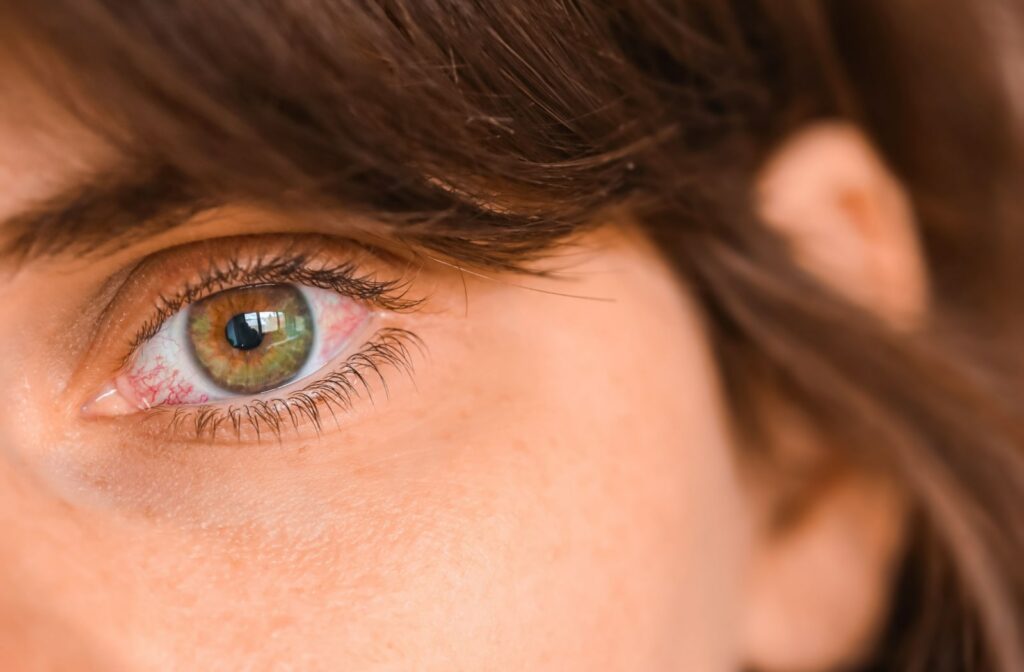Dry eye syndrome is a common condition that affects millions globally, characterized by insufficient lubrication on the surface of the eye, leading to discomfort, inflammation, and sometimes vision impairment. Traditional treatments include artificial tears, medications, and lifestyle changes.
However, a newer approach, radiofrequency (RF) treatment, has emerged as a promising alternative for those seeking relief from dry eye symptoms. Low-energy radiofrequency waves, or RF, gradually warm the skin surrounding the eyes. The heat encourages the release of lipids that stabilize the tear film by helping to clear any clogged glands.
What is Dry Eye Syndrome?
Dry eye syndrome, also known simply as dry eye, is a common condition where the eyes do not produce enough tears or the tear quality is inadequate to lubricate and nourish the eye effectively. This leads to inflammation and damage to the surface of the eye.
Symptoms of dry eye can include:
- Feelings of dryness
- Irritation
- Itchiness
- Burning feelings
- Watery eyes as the body tries to compensate for the dryness
The condition can be caused by various factors, including age, hormonal changes, environmental conditions like wind and dry air, prolonged screen use, certain medications, and health conditions that affect tear production. Managing dry eye often involves using artificial tears, and implementing lifestyle changes. In some cases, medical procedures can help restore tear balance and improve eye comfort.
Dry Eye When Left Untreated
If untreated, dry eye syndrome can lead to several bad and possibly serious results. Dryness and irritation can affect life quality. They make daily activities uncomfortable and strain tasks that need visual focus, like reading or driving.
Physically, the lack of proper lubrication can cause more than just discomfort. Chronic dry eye can lead to an increased risk of eye infections, as the tear film loses its ability to act as a protective barrier against pathogens. Without enough tears, the eyes can’t flush out irritants and microorganisms well.
Moreover, the ongoing inflammation associated with dry eye can lead to the scarring of the cornea, the clear front surface of the eye. This scarring can harm vision. In severe cases, it might need surgery to restore sight. Also, rubbing the eyes to relieve symptoms can make the situation worse. It can lead to more damage.
Managing dry eye is crucial for comfort and preventing long-term damage to the eyes that could impair vision. Regular consultations with healthcare professionals or your eye doctor and adhering to prescribed treatments are essential steps in effectively managing this condition.
What is Radiofrequency Treatment?
Radiofrequency treatment for dry eye involves using low-energy radiofrequency waves to heat the skin around the eyes gently. This non-invasive technique targets the meibomian glands, which are responsible for secreting oils that form the top layer of the tear film. Proper functioning of these glands is crucial for maintaining adequate tear quality and preventing rapid evaporation.
At Higgins Brothers’ Vision Care, we offer NuEra radiofrequency for dry eye syndrome and other skin conditions.
How Does RF Treatment Work?
The procedure is typically performed in an outpatient setting and takes about 10 to 15 minutes. A practitioner applies a thin layer of conductive gel to the skin around the eyes and uses a hand-held device to deliver controlled RF energy. The heat from the RF waves penetrates the skin and reaches the meibomian glands, stimulating them to function more effectively.
The heat helps to unclog any blocked glands, promoting the secretion of oils that stabilize the tear film. This process not only improves moisture on the eye’s surface but also helps to reduce symptoms such as itchiness, redness, and a gritty feeling in the eyes.
Benefits of Radiofrequency Treatment
RF treatment offers several advantages over traditional dry eye therapies:
- Non-invasive: The procedure is gentle, does not require surgery, and involves no significant downtime.
- Quick and Convenient: Each session is quick, making it a convenient option even for busy individuals.
- Effective Relief: Many patients report significant improvement in symptoms, with effects lasting several months after the treatment.
- Safe: RF treatment has a good safety profile, with minimal risks and side effects.
Who Can Benefit from RF Treatment?
RF treatment is suitable for individuals with mild to moderate dry eye symptoms, particularly those caused by meibomian gland dysfunction. It is also an option for patients who have not found sufficient relief from conventional treatments like eye drops or who are looking for a long-term solution to manage their symptoms.
Treating Your Dry Eyes with Radiofrequency in Plainville
Radiofrequency treatment is a promising modern therapy for managing dry eye syndrome, particularly for those with meibomian gland dysfunction. By improving gland functionality and tear film stability, RF treatment not only alleviates symptoms but also enhances overall eye health.
As with any medical procedure, it’s essential to consult with a healthcare provider to determine if RF treatment is appropriate for your specific condition. As technology advances and more research becomes available, RF treatment could become a mainstream option for combating the challenges of dry eye. Book an appointment at Higgins Brothers’ Vision Care to learn more about radiofrequency treatment today!




